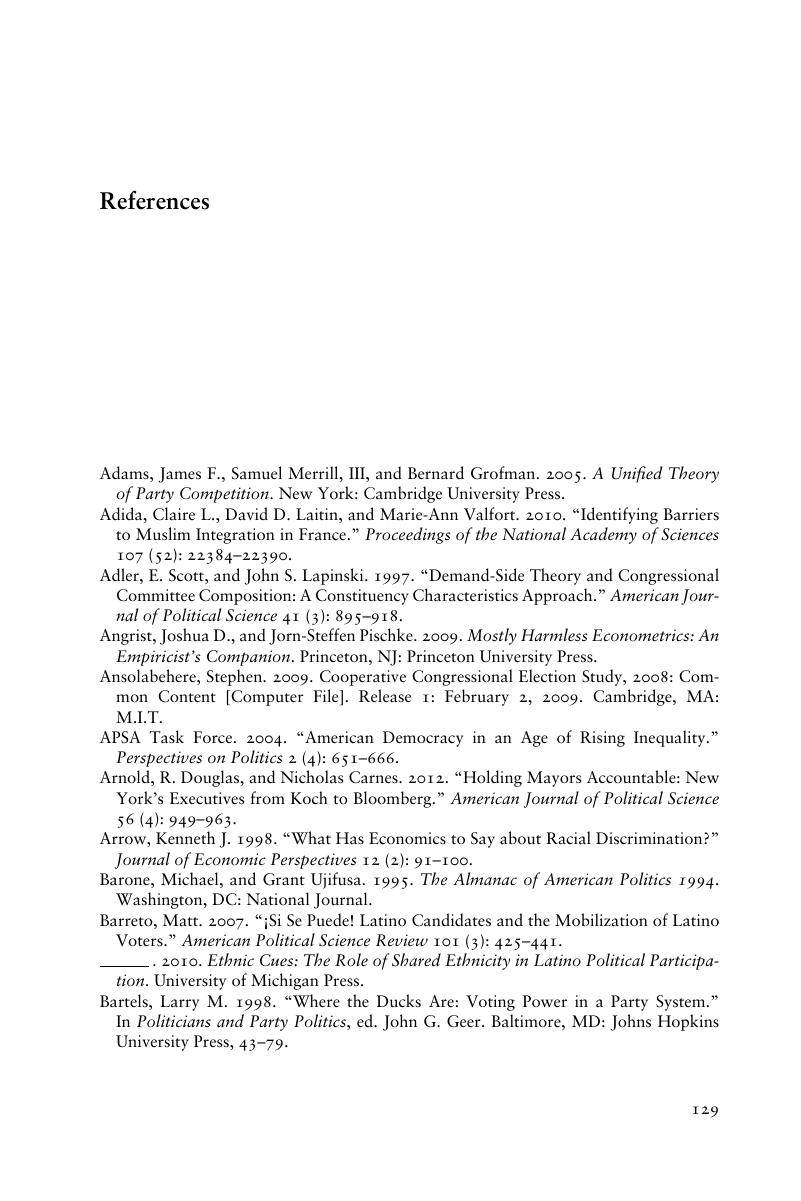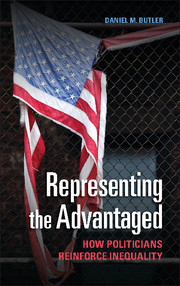Book contents
- Frontmatter
- Contents
- Acknowledgments
- 1 Representatives as the Source of Bias
- 2 When Can Representation Break Down?
- 3 Details of the Constituency Service Field Experiments
- 4 Bias in the Way Officials Process Constituents’ Opinions
- 5 Information Costs and Officials’ Proactive Effort Levels
- 6 Direct Discrimination
- 7 Bias in Politics
- References
- Index
- References
References
Published online by Cambridge University Press: 05 August 2014
- Frontmatter
- Contents
- Acknowledgments
- 1 Representatives as the Source of Bias
- 2 When Can Representation Break Down?
- 3 Details of the Constituency Service Field Experiments
- 4 Bias in the Way Officials Process Constituents’ Opinions
- 5 Information Costs and Officials’ Proactive Effort Levels
- 6 Direct Discrimination
- 7 Bias in Politics
- References
- Index
- References
Summary

- Type
- Chapter
- Information
- Representing the AdvantagedHow Politicians Reinforce Inequality, pp. 129 - 140Publisher: Cambridge University PressPrint publication year: 2014



